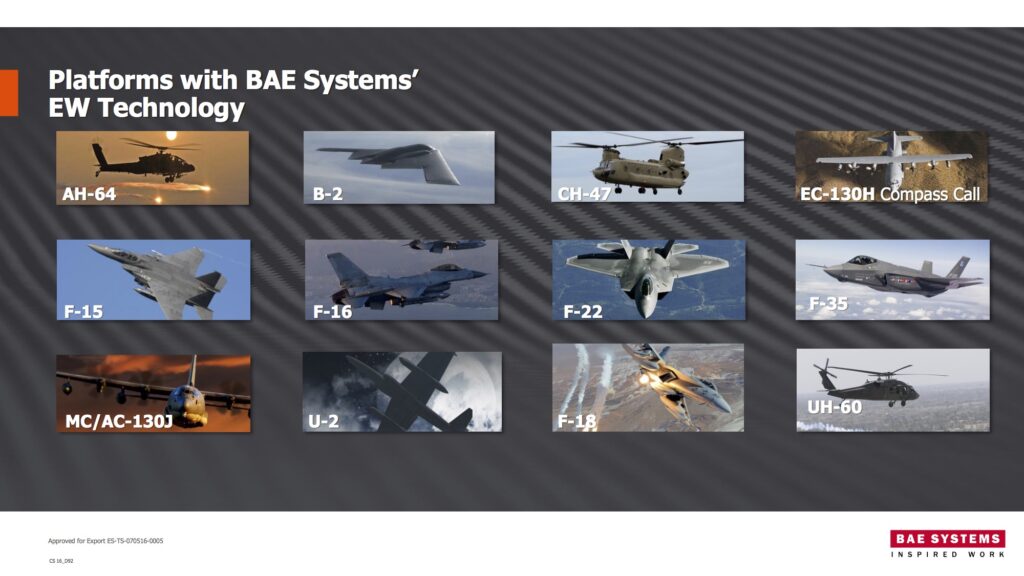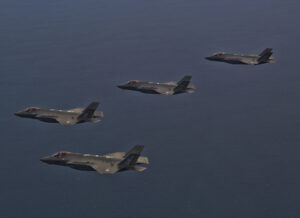BAE Systems Inches Out In Public On Electronic Warfare
Posted on

FARNBOROUGH: For much of the last few years when one thought of electronic warfare, one tended to think of Raytheon. After all, they’re building the Next Generation Jammer, right?
BAE Systems would like to change that and is beginning to take a guarded but more public stance. For years, Air Force officials have declined to discuss the electronic warfare and cyber capabilities of the F-35 Joint Strike Fighter for example, which BAE Systems builds.
Then the head of Air Combat Command, Gen. Hawk Carlisle, began to publicly mention these capabilities at the Royal International Air Tattoo at RAF Fairford last week. He said the F-35’s EW capabilities are “an order of magnitude better than anything we’ve had in the past.” That, I can tell you, put a smile on the face of at least two BAE employees.
Until now, we’ve had little independent insight from the military on the actual performance of the F-35’s EW and cyber capabilities. I know from speaking with a range of Air Force and industry officials over the last two years that a key part of the F-35’s effectiveness derives from the fact it was designed from the get-go to launch both cyber and EW attacks on enemy air defenses, especially the most advanced Russian missile systems such as the S-400. Anything that emits, such as radios, radar and other sources, can be attacked
Here are two marketing statements about the systems by, respectively, Lockheed Martin and BAE:
“Advanced electronic warfare capabilities enable the F-35 to locate and track enemy forces, jam radio frequencies and disrupt attacks with unparalleled precision. All three variants of the F-35 carry active, electronically scanned array (AESA) radars with sophisticated electronic attack capabilities, including false targets, network attack, advanced jamming and algorithm-packed data streams. This system allows the F-35 to reach well-defended targets and suppress enemy radars that threaten the F-35. In addition, the ASQ-239 system provides fully integrated radar warning, targeting support, and self-protection, to detect and defeat surface and airborne threats.

F-35A four flight
“While F-35 is capable of stand-off jamming for other aircraft — providing 10 times the effective radiated power of any legacy fighter — F-35s can also operate in closer proximity to the threat (‘stand-in’) to provide jamming power many multiples that of any legacy fighter.”
From BAE: “Always active, AN/ASQ-239 provides all-aspect, broadband protection, allowing the F-35 to reach well-defended targets and suppress enemy radars. The system stands alone in its ability to operate in signal-dense environments, providing the aircraft with radio-frequency and infrared countermeasures, and rapid response capabilities.”
But as you can see from the graphic above, first-ranked EW is not something new for BAE Systems. The F-22 and B-2 both rely on BAE capabilities. What you will hear very little about is the convergence of EW and cyber in the F-35 thanks to the Northrop Grumman-built AESA radar and the plane’s huge quantities of software, much of which is written by BAE Systems employees. In addition to the EW capabilities, BAE writes software for the fuel management system and other unspecified operating systems.
We look forward to hearing more details from BAE.
Subscribe to our newsletter
Promotions, new products and sales. Directly to your inbox.
